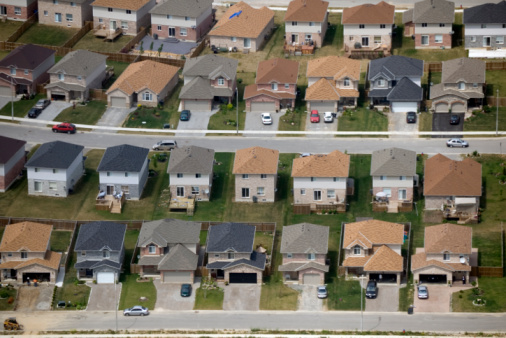The most recent National Association of Home Builders/Wells Fargo Housing Opportunity Index listed the most affordable housing markets in the United States. Most were older, industrial age cities in which home prices, incomes and unemployment rates have been challenged since the start of the recession. Most markets in which homes were less affordable were where high income ones, and a strong employment level helped carry residents through the worst of the economic downturn.
The group reported:
In all, 64.7 percent of new and existing homes sold between the beginning of October and end of December were affordable to families earning the U.S. median income of $64,400. This is virtually the same as the 64.5 percent of homes sold that were affordable to median-income earners in the third quarter.
The most affordable markets were almost all in the Midwest and Northeast, and many were factory towns.
Youngstown-Warren-Boardman, Ohio-Pa was the nation’s most affordable major housing market, as 89.4 percent of all new and existing homes sold in this year’s fourth quarter were affordable to families earning the areas’ median incomes of $53,900. Meanwhile, Kokomo, Ind., claimed the title of most affordable smaller market, with 96.3 percent of homes sold in the fourth quarter being affordable to those earning the median income of $60,100.
Other major U.S. housing markets at the top of the affordability chart in the fourth quarter included Harrisburg-Carlisle, Pa.; Syracuse, N.Y.; Buffalo-Niagara Falls, N.Y.; and Scranton-Wilkes-Barre, Pa.; in descending order.
Smaller markets joining Kokomo at the top of the affordability chart included Springfield, Ohio; Monroe, Mich.; Vineland-Millville-Bridgeton, N.J.; and Cumberland, Md.-W.Va.
Most of the least affordable housing markets where in the tech job heavy regions of California:
For a fifth consecutive quarter, San Francisco-San Mateo-Redwood City, Calif. held the lowest spot among major markets on the affordability chart. There, just 14.1 percent of homes sold in the fourth quarter were affordable to families earning the area’s median income of $101,200.
Other major metros at the bottom of the affordability chart included Santa Ana-Anaheim-Irvine, Calif.; Los Angeles-Long Beach-Glendale, Calif.; New York-White Plains-Wayne, N.Y.-N.J.; and San Jose-Sunnyvale-Santa Clara, Calif.; in descending order.
The White Plains area is one of the financially better off suburbs of New York City.
Markets with affordable housing would seem to be attractive, if many of them were not so economically broken.
It’s Your Money, Your Future—Own It (sponsor)
Are you ahead, or behind on retirement? For families with more than $500,000 saved for retirement, finding a financial advisor who puts your interest first can be the difference, and today it’s easier than ever. SmartAsset’s free tool matches you with up to three fiduciary financial advisors who serve your area in minutes. Each advisor has been carefully vetted and must act in your best interests. Start your search now.
If you’ve saved and built a substantial nest egg for you and your family, don’t delay; get started right here and help your retirement dreams become a retirement reality.
Thank you for reading! Have some feedback for us?
Contact the 24/7 Wall St. editorial team.
